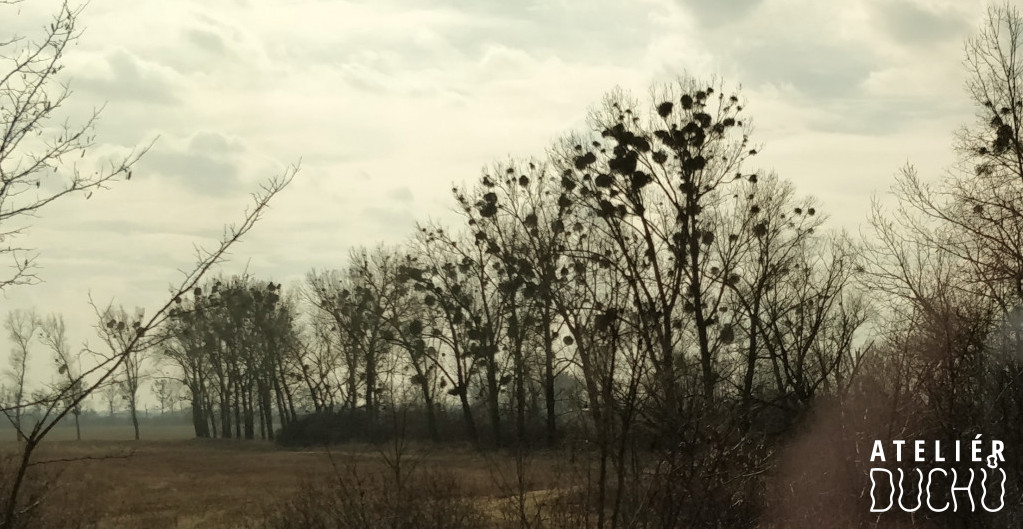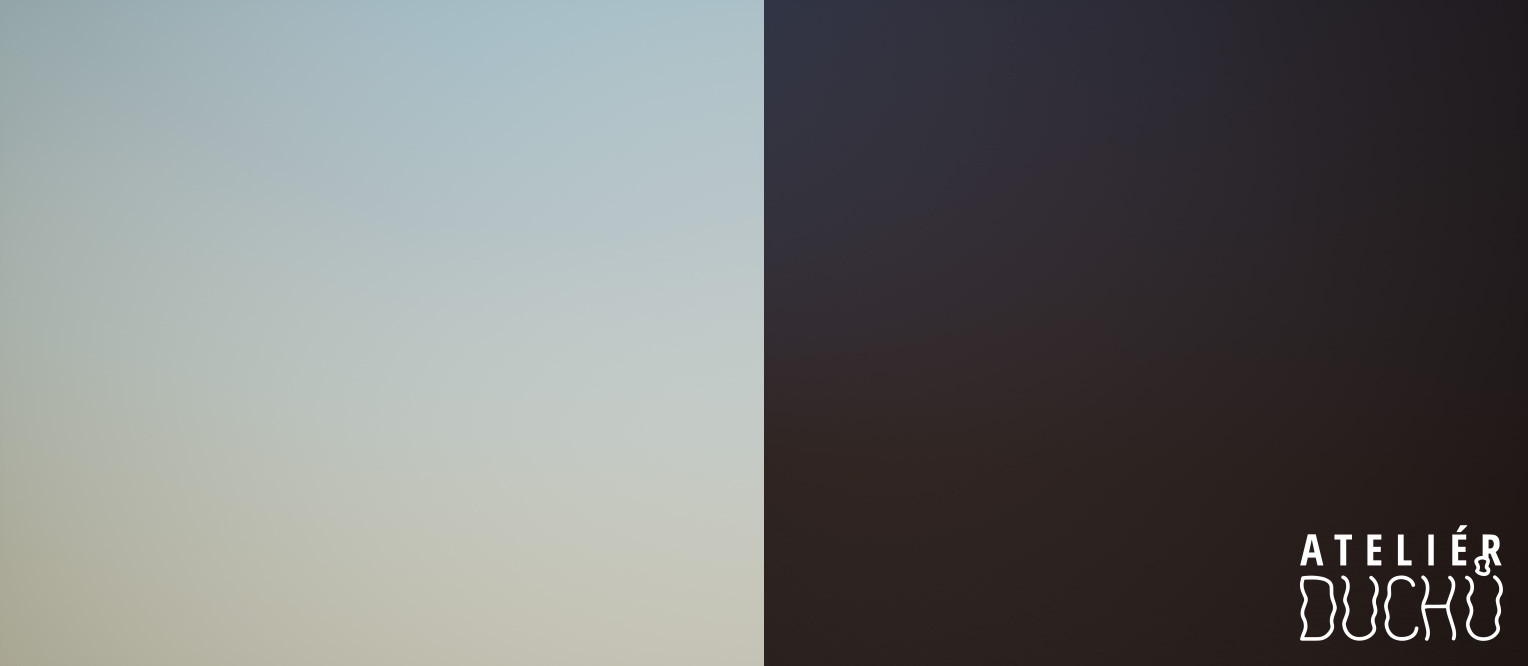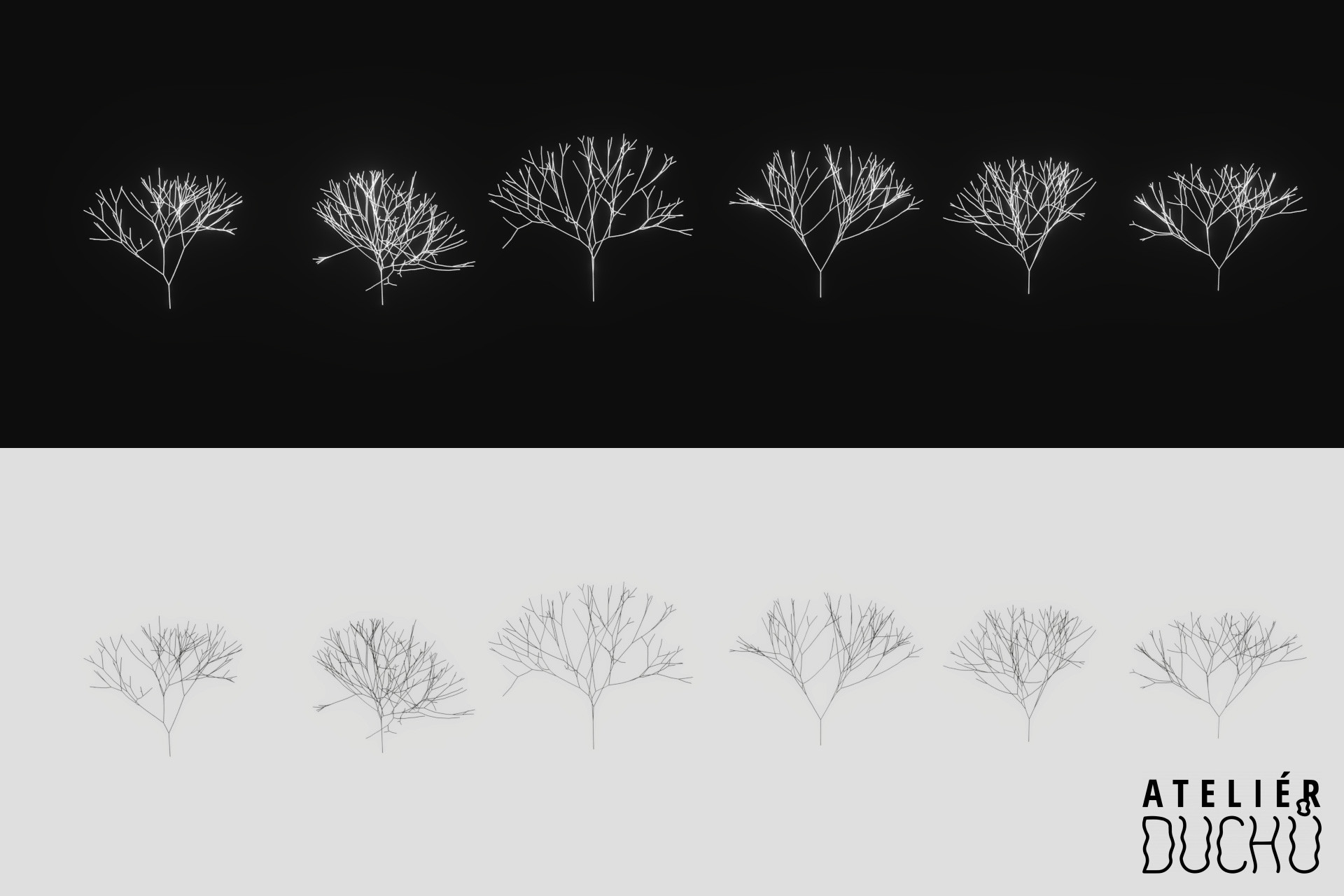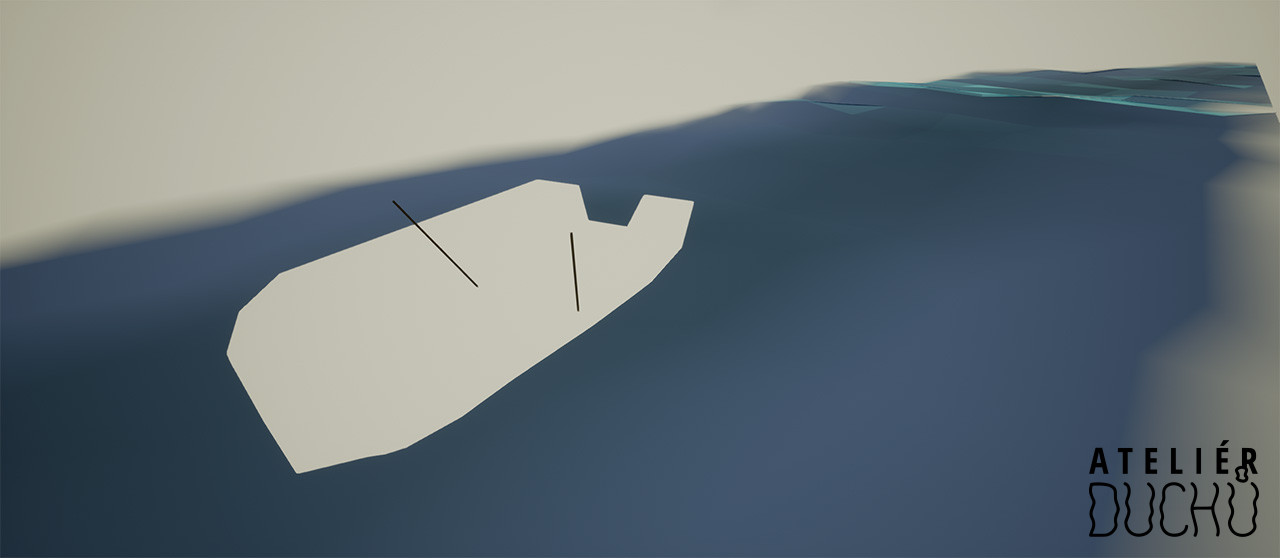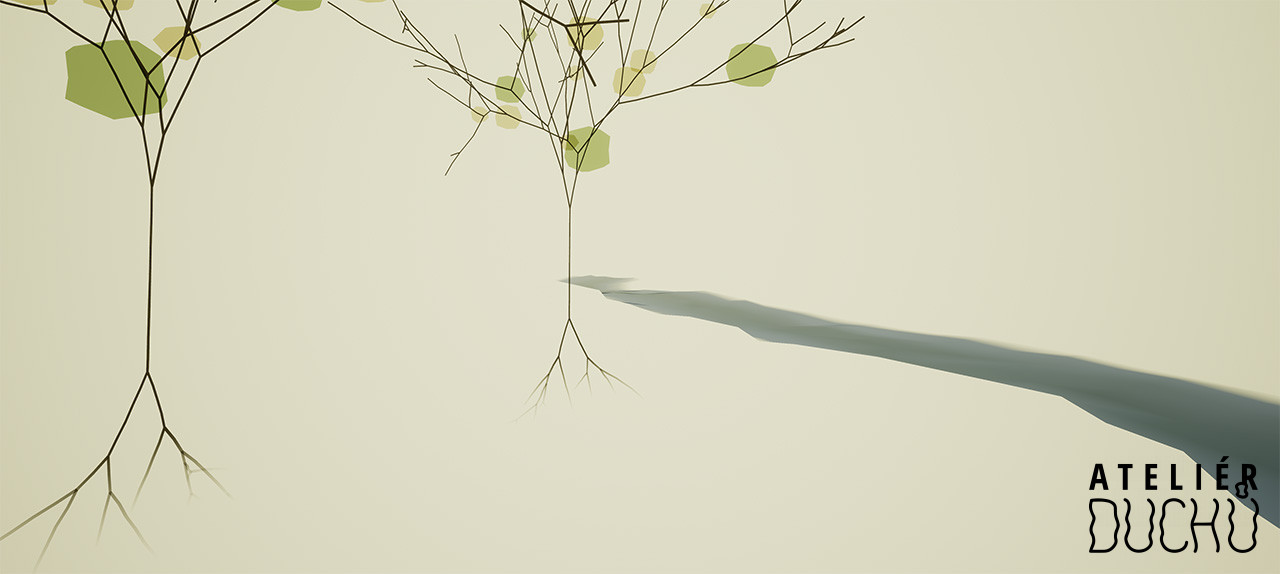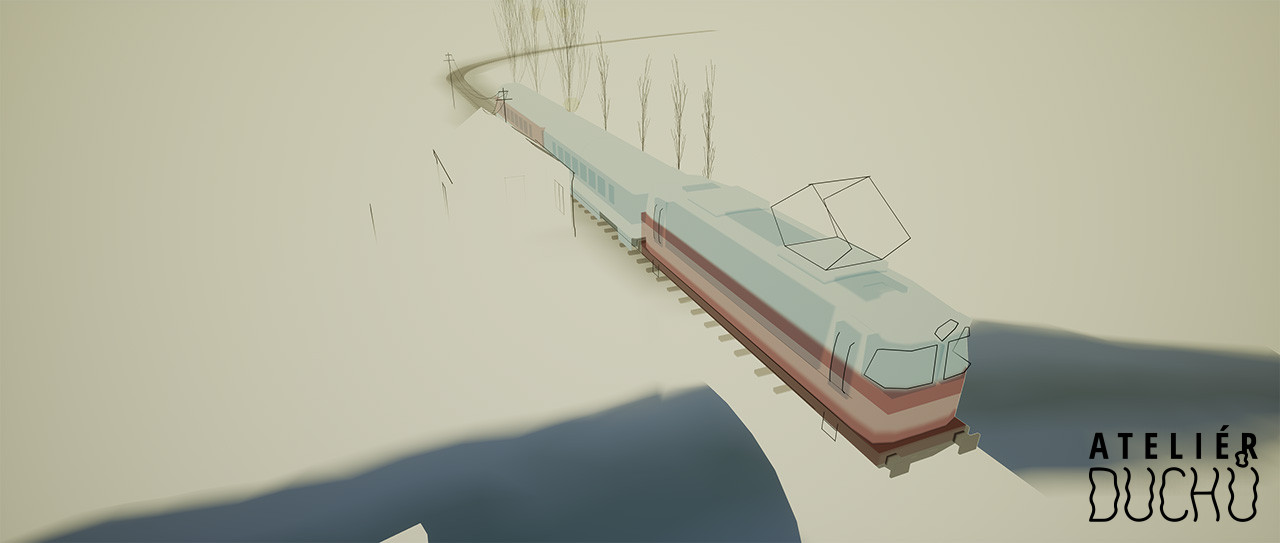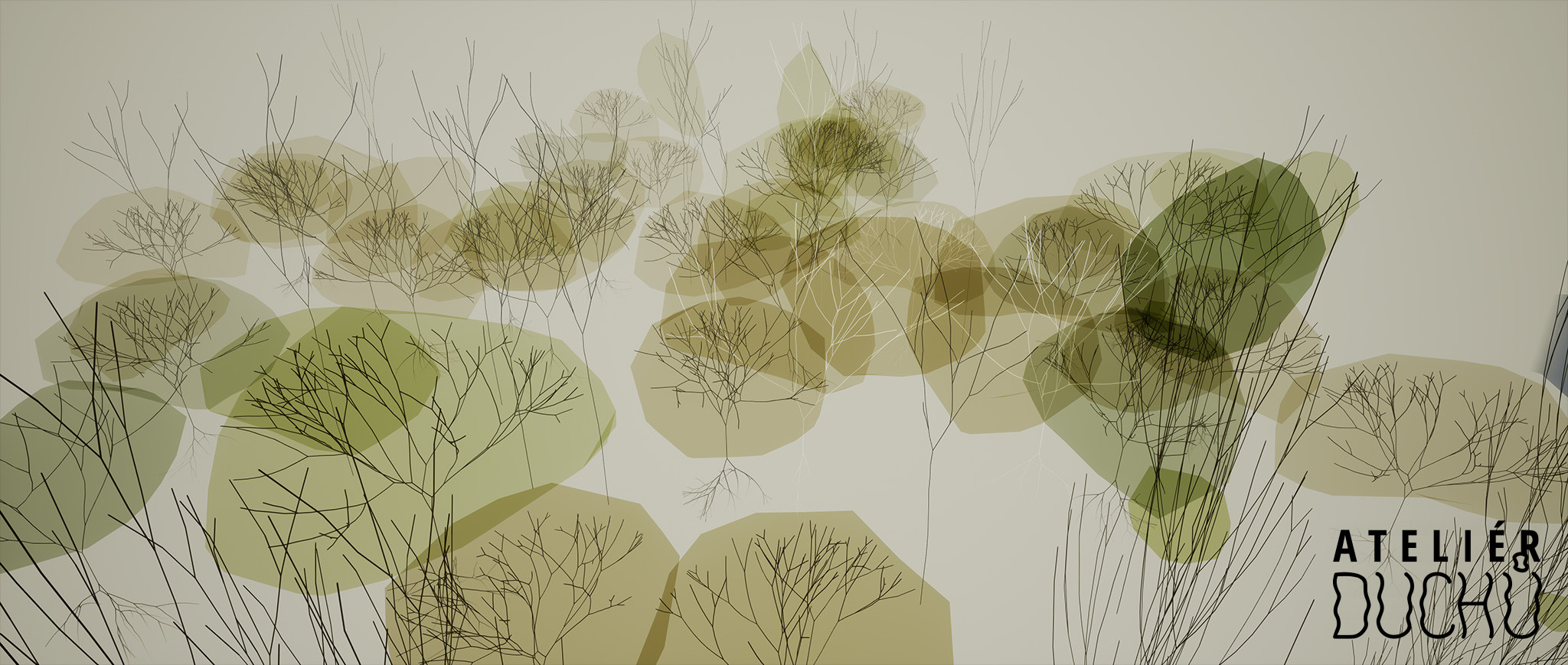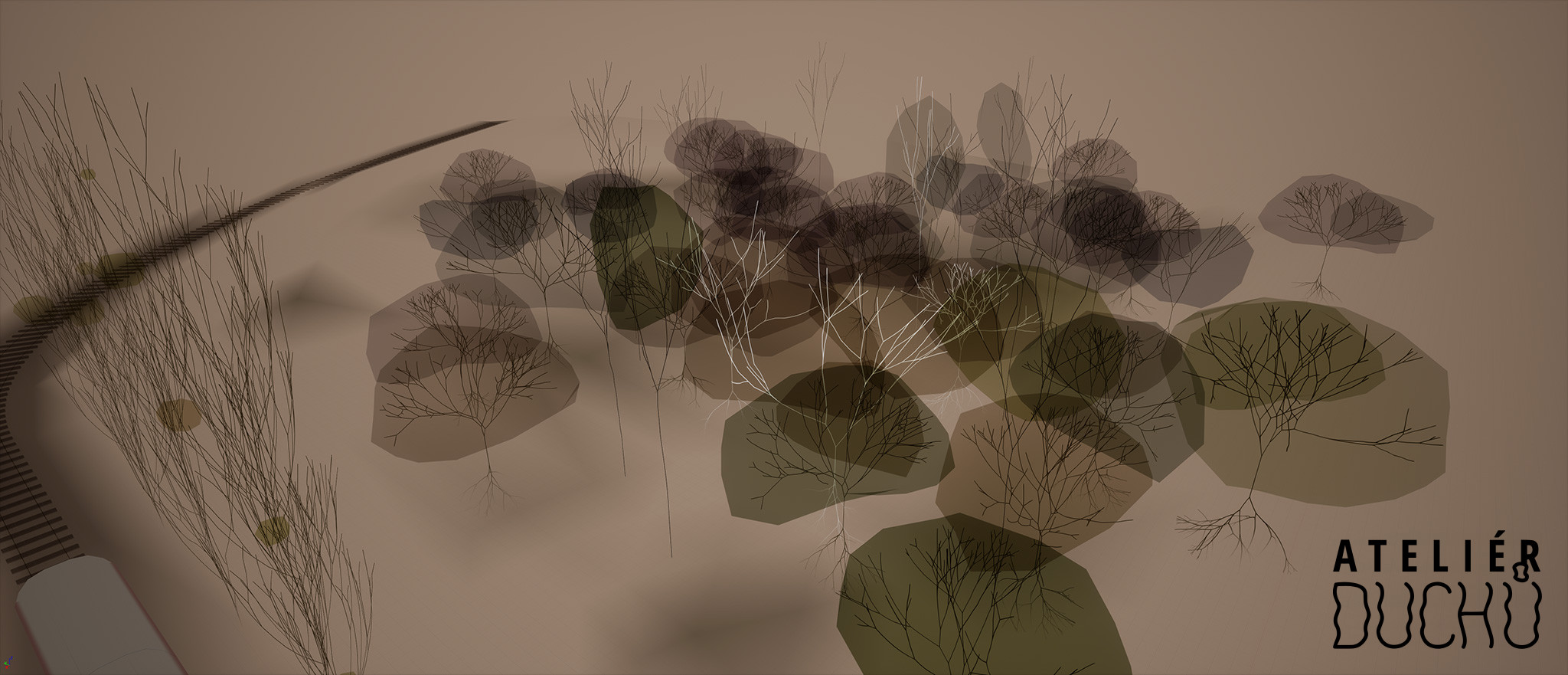erLett I. (Set of ...)
erLett is a digital game prototype in which I experiment with text as the main game mechanic. I've been entertaining the idea to work with text as the primary game mechanic since we made Set of Reality with Alžbeta Chmelíková, an interactive installation with text input. In the installation, a participant can use the keyboard to write words that will be later used to fetch semantically related words via ConceptNet.io. This process leads to the destruction of the forest. The feeling of 3D floating words/letters is something that I would like to keep in the game.
Currently, I collaborate only with VV who is writing the story. In the beginning, I've come up with some basic motives - friendship, communication, and later family. The motives were based on the personal issues I was going through at that time. VV suggested that the story could use a detective approach. In the time I did not think about it that much but later I realized that it fits my motivation well. The thing is, I don't have concrete points that I want to raise with the game. I am just searching for unsolved things in myself. I am playing a detective with myself, my past, family, friendships, and worldview.
The game is running on Unreal Engine 4. For models I use Blender. Textures, which are required minimally, are made in photoshop.
The visual style is being actively developed since the beginning of 2019. The idea to expand the main mechanics of Set of Reality is going through my head since summer 2018.
As I've said before, I don't necessarily have a concrete point to raise with this project. But I think that my approach forces me to reveal the way I think about things. Based on this I would say that the goal of the work is a self-portrait - to create a game in which a player changes the word context, seeks the right context for specific words, based on which changes the game world around him.
Development of the visual style
The main inspiration came from mistletoe. Precisely, trees (poplar) overgrown by mistletoe in autumn-winter. Even though it was not intentional, mistletoe fits the plot perfectly. It's a parasite.
On the background of the scene, there is a gradient which is used instead of skybox/skysphere.
Trees were the first visual asset. They were mainly inspired by the visual of Set of Reality. Although instead of volumes that were textured, currently, the lines are volumes themselves. Trees are also more stylized towards low-poly visual.
Crowns are made from solid color volumes. Colors are multiplied - similarly to markers. Mistletoe is drawn in the same way.
Next step was a river. The surface is defined by low-poly material with waves.
Gound is not textured at all. It just masks the objects that have color. The same way is used to draw buildings and vehicles to which layers of color may be added.
Mechanics
Guessing words
As I've said before, in the installation Set of Reality, the participant could use a keyboard to write words. In-game would this type of input be used to guess words. The thing that I like about this type of input is that the player must type whole words, based on his vocabulary or just put simply, on his ability to name things in the world.
As you probably could guess, this input is not very useful for consoles. For this reason, I decided to create a new input that replaces the virtual keyboard. Letters are floating in the 3d space and can be chosen by d-pad. The player can still write any word even with mistakes. He always has the letters he needs to assemble the words he has to guess, plus some extra.
Both these inputs were working before I decided to change the game into first-person. As the visual style was evolving, I started to feel it would be a pity not to be able to move within it. This led me to create another input/mechanic. This time, the player is moving in first-person.
If he has a riddle in front of him, he can carry letters between the trees and thus create words. In this case, the player does not decide the order of the letters. Words are automatically arranged when the player puts all the necessary letters in a given tree and removes those that do not belong there.
